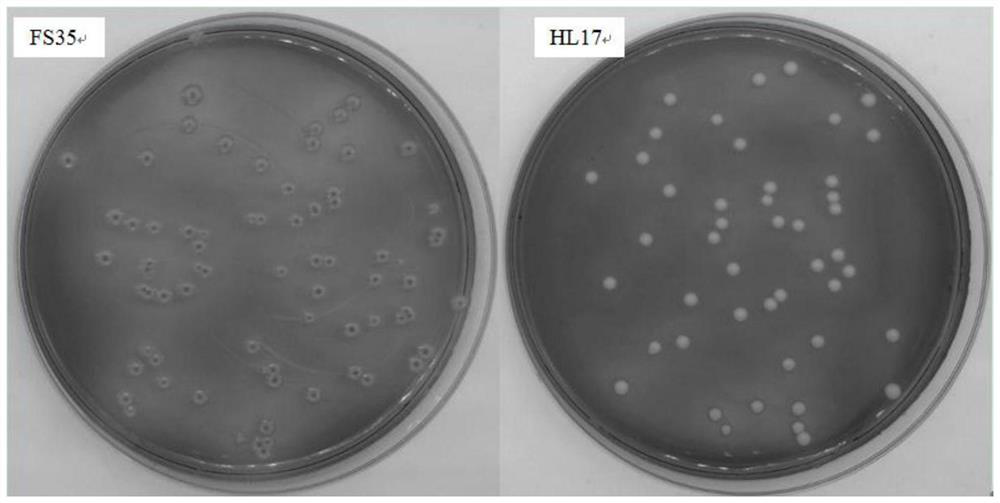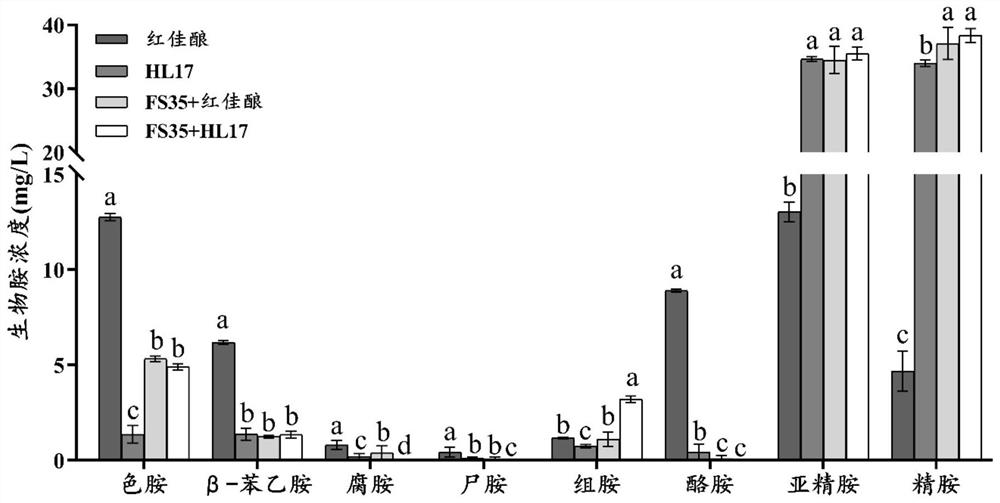Two strains of wild yeast for degrading biogenic amine and application of two strains of wild yeast in fruit wine brewing
A biogenic amine and fruit wine technology, applied in the field of microbiology, can solve problems such as single style, lack of regional characteristics of fruit wine, and undeveloped local yeast research work
- Summary
- Abstract
- Description
- Claims
- Application Information
AI Technical Summary
Problems solved by technology
Method used
Image
Examples
Embodiment 1
[0027] Example 1 Screening of Saccharomyces cerevisiae HL17 and Hansenula grape juice FS35 using high-throughput methods
[0028] In the present invention, a strain of Saccharomyces cerevisiae with strong biogenic amine degradation ability is obtained and preserved from the Cabernet Sauvignon grape fruit of Huailai Baihua Valley Vineyard in Huailai, Hebei, and another strain of Hansenula spp. with strong biogenic amine degradation ability is Obtained and preserved from the Cabernet Sauvignon grape fruit of Longxibao Winery in Fangshan District, Beijing, and then screened through experiments. The screening process is as follows:
[0029]Take out the strains frozen in the glycerol tube, inoculate them in liquid YPD medium at a ratio of 10% after thawing, culture at 28°C and 160rpm for 12 hours, use an inoculation loop to dip a small amount of bacterial liquid on the WL differential medium for plate marking , the streaked plate was cultured statically at 28°C for 48h;
[0030] I...
Embodiment 2
[0040] Example 2 Comparison test of wild Saccharomyces cerevisiae HL17, wild Hansenula spp. FS35 and commercial Saccharomyces cerevisiae red wine small-scale brewing
[0041] Mature Cabernet Sauvignon variety wine grapes were destemmed and crushed, and a 500mL glass jar was used as a wine fermentation container. Combined with the results of strain screening in the early stage, a total of 4 fermentation test groups were set up, and each group was set up with 3 parallels. The specific grouping conditions are shown in the table 2. After the yeast was activated, it was inoculated in YPD liquid medium, and cultured at 28° C. and 160 rpm for 12 hours with constant temperature shaking. Add 0.4L grape must, 0.4mL sulfurous acid to each jar. The yeast was inoculated into the grape mash according to the inoculum amount of 10%, and the sequential inoculation fermentation was to inoculate Saccharomyces cerevisiae after inoculating FS35 for 72 hours of fermentation. Use gauze dipped in s...
PUM
 Login to View More
Login to View More Abstract
Description
Claims
Application Information
 Login to View More
Login to View More - R&D
- Intellectual Property
- Life Sciences
- Materials
- Tech Scout
- Unparalleled Data Quality
- Higher Quality Content
- 60% Fewer Hallucinations
Browse by: Latest US Patents, China's latest patents, Technical Efficacy Thesaurus, Application Domain, Technology Topic, Popular Technical Reports.
© 2025 PatSnap. All rights reserved.Legal|Privacy policy|Modern Slavery Act Transparency Statement|Sitemap|About US| Contact US: help@patsnap.com



